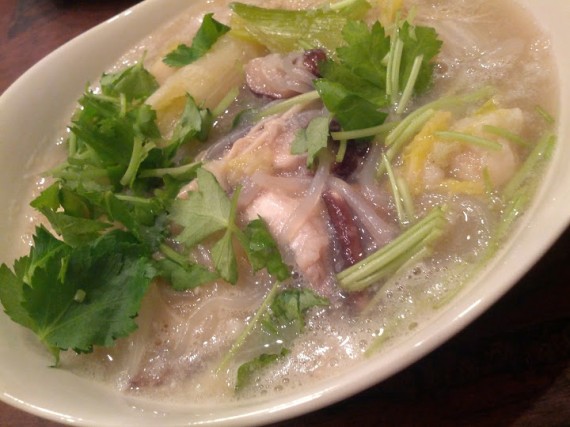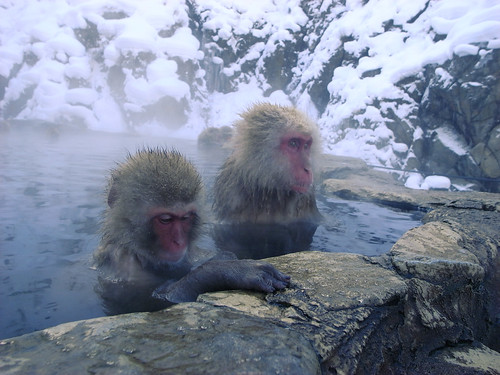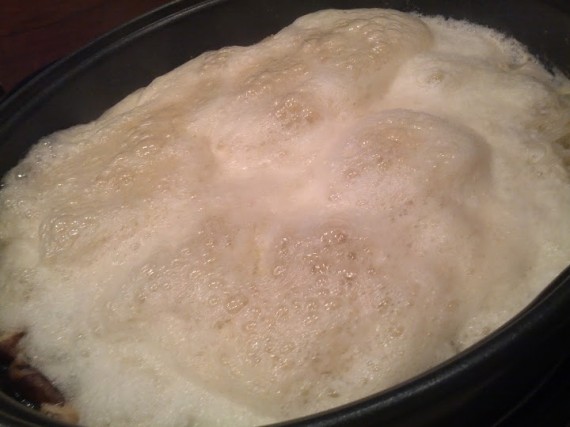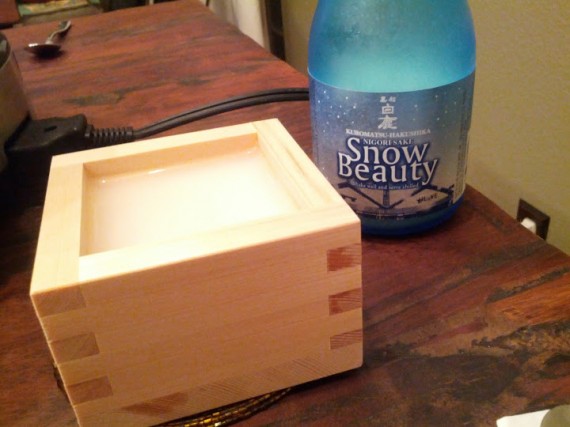Snowy Hotpot

A couple of years ago, around the time I first started this blog, I was lucky enough to be able to visit Japan. While I have always loved Japanese food, I had mostly experienced the more popular items we have here in America: teppanyaki, sushi, and noodle bowls. Of course, during the week we were in Japan, I had to seek out sushi at the famed Tsukiji Fish Market, and its freshness was astounding. However, for the most part, I opened myself up to whatever was being served, trying multi-course meals at Chef Chen Kenichi’s restaurant, Szechwan Restaurant Chen, and at the ryokan we stayed at in Kyoto, Yachiyo. During my time there I had custards, dried baby anchovies, many random soups and fruits that I never did identify, tofu prepared in so many ways, and hotpot. When I made it back home, I wanted to take advantage of the Japanese groceries we have here, so I bought a couple of Japanese cookbooks, an electric hotpot, and I started studying the ingredients and techniques of the cuisine.
Fast forward to 2012: I’m very blessed, because I’m getting the chance to go back to Japan! Since it was a rather hasty decision, I was googling ideas of what to do while we’re there during the winter. That’s when I stumbled upon these guys.

Snow Monkeys in Jigokudani by spDuchamp
Now, I’ve known about Japanese snow monkeys. There was a famous National Geographic photograph, I believe, of them. But they had faded to the back of my mind, and when I realized that I could go see snow monkeys, sitting in hot springs, warming themselves, my excitement level went into overdrive. For the past week, everyone who I’ve talked to has heard about the snow monkeys.
What does this have to do with food? Well, there’s a hotpot I’ve been wanting to try for ages, but it was filled with odd-sounding vegetables. Nagaimo, a tuber that when grated or blended, becomes a mucus-y feeling substance. That doesn’t really sound appetizing, does it? However, it’s what gives this dish, Snow Hotpot, it’s name. When added to the hotpot, it has a snowy appearance.

Then there were a couple of other ingredients that I hadn’t heard of. Mitsuba was an herb that looked similar to a parsley or cilantro. The recipe called for the entire herb to be used – leaf and stalk. While the leaves had little flavor and more lended color to the dish, the stems had a super-perfumy flavor that others at the table loved. I liked it, but I have to acclimate to strong flavors, so it took me a while to warm to it. The second item I had to find was usukuchi soy sauce, which is lighter in color than regular soy sauce, but has a bit more saltiness than the typical Japanese soy sauce.
While searching out all of these items seemed daunting, it actually couldn’t have been easier. Luckily, the cookbook I got the recipe from, Japanese Hotpots, had a lot of information on most of the items and why you wanted to use them versus something else. Once in the store it was easiest to look at the pricing signs and find the English name of the product, though it was usually also on the product itself, buried below the Japanese. So even though I went to the store at the busiest time, I zipped through the produce aisle, picked up what was needed, then headed to the soy sauce aisle (yes, there are really that many), found the bottle I was looking for with minimal time spent, then took a pass through the sake aisle to see if I could find a good sake to serve with dinner.
In keeping with the theme, I came across this. Snow Beauty. An unfiltered sake that fit with my theme of snow hotpot and snow monkey excitement perfectly! As a note to myself, I must remember that unfiltered sake is called nigori sake so I can ask for it in Japan (unlike last time, where I walked into a sake bar with over 100 different bottles, and said “Sake?”). This nigori sake was wonderful with a slight sweetness that all nigori sake have. Even better, at the grocery, they had a cedar box in the sake aisle, which is how my local sushi bar serves their unfiltered sake. I enjoy the different feel of drinking from the wood, and the slight flavor and smell of the cypress imparts while drinking.

We finished off the meal with a bit of mochi and the excitement of getting a chance to discover more wonderful meals this go round.